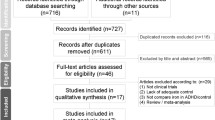Abstract
Objective: It has been suggested that both low iron and zinc levels might be associated with Attention Deficit Hyperactivity Disorder (ADHD) symptoms. However, the association of zinc and iron levels with ADHD symptoms has not been investigated at the same time in a single sample. Method: 118 subjects with ADHD (age = 7–14 years, mean = 9.8, median = 10) were included in the study. The relationship between age, gender, ferritin, zinc, hemoglobin, mean corpuscular volume and reticulosite distribution width and behavioral symptoms of children and adolescents with ADHD were investigated with multiple linear regression analysis. Results: Results showed that subjects with lower zinc level had higher Conners Parent Rating Scale (CPRS) Total, Conduct Problems and Anxiety scores, indicating more severe problems. CPRS Hyperactivity score was associated both with zinc and ferritin levels. Conners Teacher Rating Scale (CTRS) scores were not significantly associated with zinc or ferritin levels. Conclusions: Results indicated that both low zinc and ferritin levels were associated with higher hyperactivity symptoms. Zinc level was also associated with anxiety and conduct problems. Since both zinc and iron are associated with dopamine metabolism, it can be speculated that low zinc and iron levels might be associated with more significant impairment in dopaminergic transmission in subjects with ADHD.
Similar content being viewed by others

References
American Psychiatric Association (1994) Diagnostic and statistical manual of mental disorders, IVth edn. Washington DC
Konofal E, Lecendreux M, Arnulf I, Mouren MC (2004) Iron deficiency in children with attention deficit hyperactivity disorder. Arch Pediatr Adolesc Med 158:1113–1115
Oner O, Alkar O, Oner P (2008) Relation of ferritin levels with symptom ratings and cognitive performance in children with ADHD. Ped Int 50:40–44
Millichap JG, Yee MM, Davidson SI (2006) Serum ferritin in children with attention-deficit hyperactivity disorder. Pediatr Neurol 34:200–203
Sever Y, Ashkenazi A, Tyrano S, Weizman A (1997) Iron treatment in children with attention deficit hyperactivity disorder. Neuropsychobiology 35:178–180
Konofal E, Lecendreux M, Deron J, Marchand M, Cortese S, Zaïm M, Mouren MC, Arnulf I (2008) Effects of iron supplementation on attention deficit hyperactivity disorder in children. Pediatr Neurol 38:20–26
Oner P, Dirik EB, Taner Y, Caykoylu A, Anlar O (2007) Association between low serum ferritin and restless legs syndrome in patients with attention deficit hyperactivity disorder. Tohoku J Exp Med 213:269–276
Cortese S, Konofal E, Bernardina BD, Mouren MC, Lecendreux M (2009) Sleep disturbances and serum ferritin levels in children with attention-deficit/hyperactivity disorder. Eur Child Adolesc Psychiatry 18:393–399
Oner P, Oner O (2008) Relationship of ferritin to symptom ratings children with attention deficit hyperactivity disorder, effect of comorbidity. Child Psychiatry Hum Dev 39:323–330
Arnold LE, Bozzolo H, Hollway J, Cook A, DiSilvestro RA, Bozzolo DR, Crowl L, Ramadan Y, Williams C (2005) Serum zinc correlates with parent- and teacher- rated inattention in children with attention-deficit/hyperactivity disorder. J Child Adolesc Psychopharmacol 15:628–636
Uçkardeş Y, Ozmert EN, Unal F, Yurdakök K (2009) Effects of zinc supplementation on parent and teacher behaviour rating scores in low socioeconomic level Turkish primary school children. Acta Paediatr 98:731–736
Krause J (2008) SPECT and PET of the dopamine transporter in attention-deficit/hyperactivity disorder. Expert Rev Neurother 8:611–625
Yorbik O, Ozdag MF, Olgun A, Senol MG, Bek S, Akman S (2008) Potential effects of zinc on information processing in boys with attention deficit hyperactivity disorder. Prog Neuropsychopharmacol Biol Psychiatry 32:662–667
Erikson K, Pinero D, Connor J, Beard J (1997) Iron status and distribution on iron in the brains of the developing rats. J Nutr 127:2030–2038
Conners CK (1997) Conners’ rating scales- revised. Multi-Health Systems Publishing, North Tonawada
Dereboy C, Senol S, Sener S (1998) Adaptation of Conners’ parent rating scale in Turkish. In: Proceedings 10th National Congress of Psychology, Ankara
Goyette CH, Conners CK, Ulrich RF (1978) Normative data on revised Conners’ parent and teacher rating scales. J Abnorm Child Psychol 6:221–236
Sener S, Dereboy C, Dereboy IF, Sertcan Y (1995) Conners’ teacher rating scale Turkish version-I. Tr J Child Adolesc Ment Health 2:131–141
Wigglesworth JM, Baum H (1988) Iron dependent enzymes in the brain. In: Youdim MBH (ed) Brain ıron: neurochemical and behavioral aspects. Taylor and Francis, New York, pp 25–66
Ashkenazi R, Ben-Shachar D, Youdim MBH (1982) Nutritional iron deficiency and dopamine binding sites in the rat brain. Pharmacol Biochem Behav 17:43–47
Swanson JM, Kinsbourne M, Nigg J, Lanphear B, Stefanatos GA, Volkow N, Taylor E, Casey BJ, Castellanos FX, Wadwha PD (2007) Etiological subtypes of attention deficit hyperactivity disorder: brain imaging, molecular genetics and environmental factors and the dopamine hypothesis. Neuropsychol Rev 17:39–59
Volkow N, Wang J, Newcorn J, Telang F, Solanto MV, Fowler JS, Logan J, Ma Y, Schulz K, Pradhan K, Wong J, Swanson JM (2007) Depressed dopamine activity in caudate and preliminary evidince of limbic involvement in adults with attention deficit hyperactivity disorder. Arch Gen Psychiatry 64:932–940
Whittle N, Lubec G, Singewald N (2009) Zinc deficiency induces enhanced depression-like behaviour and altered limbic activation reversed by antidepressant treatment in mice. Amino Acids 36:147–158
Acknowledgments
Ozgur Oner, MD and Pinar Oner, MD are supported by Fogarty International Center Mental Health and Developmental Disabilities Program (D43TW05807) at Children’s Hospital, Boston (Kerim Munir, PI).
Author information
Authors and Affiliations
Corresponding author
Rights and permissions
About this article
Cite this article
Oner, O., Oner, P., Bozkurt, O.H. et al. Effects of Zinc and Ferritin Levels on Parent and Teacher Reported Symptom Scores in Attention Deficit Hyperactivity Disorder. Child Psychiatry Hum Dev 41, 441–447 (2010). https://doi.org/10.1007/s10578-010-0178-1
Published:
Issue Date:
DOI: https://doi.org/10.1007/s10578-010-0178-1



